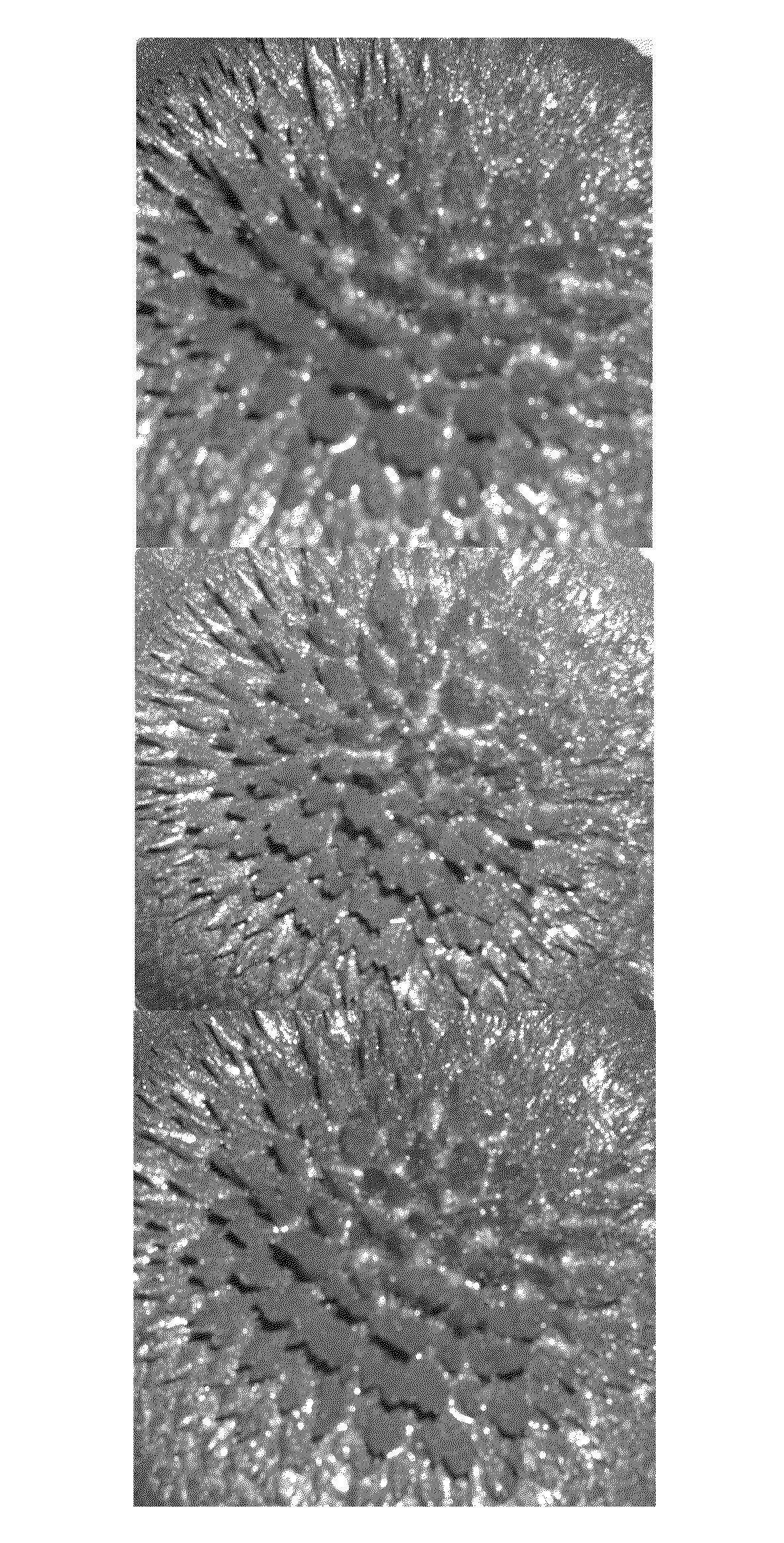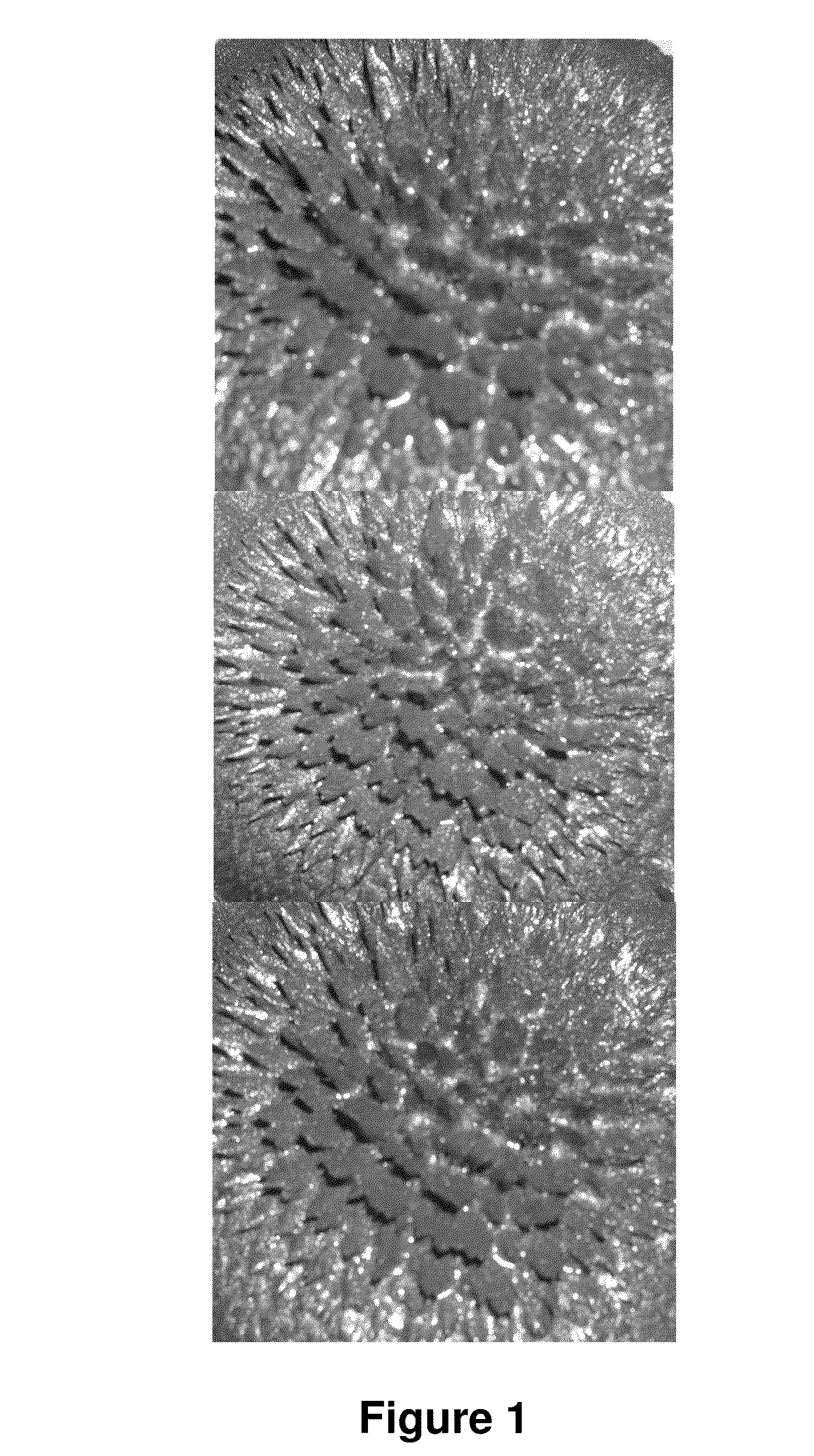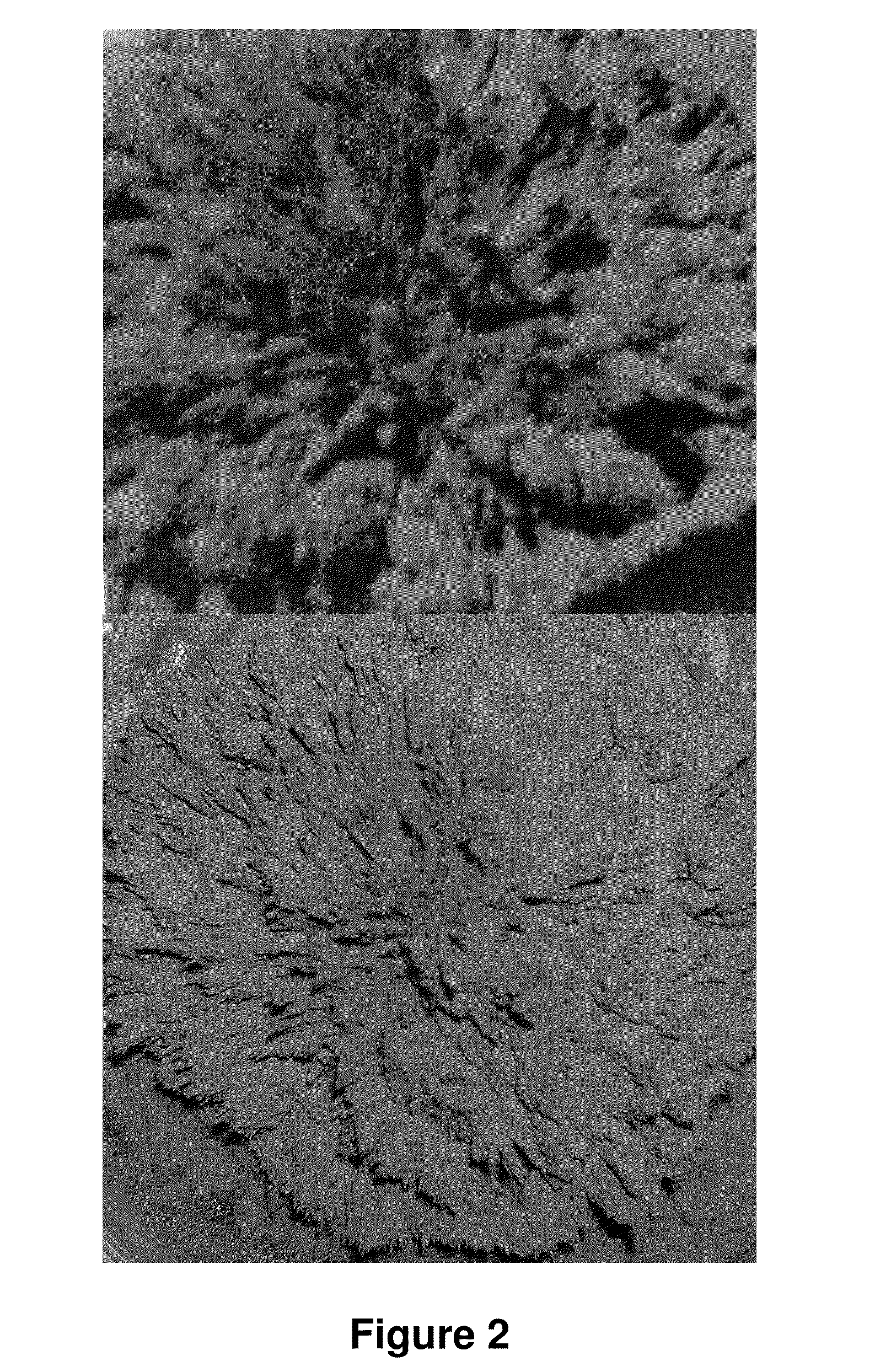Porous materials embedded with nanoparticles, methods of fabrication and uses thereof
- Summary
- Abstract
- Description
- Claims
- Application Information
AI Technical Summary
Benefits of technology
Problems solved by technology
Method used
Image
Examples
examples of preparation
Example 1
[0105]As a polymer precursor, 9 g of epoxy resin ED-20 (epoxy-diane resins formed by reaction of bisphenols A or F with epichlorohydrine) available from Chimex Ltd, St. Petersburg, Russia) and 1-2% mas of curing agent triethylenetetramine (TETA) (foaming at ambient temperature 20° C.) were mixed in a form with 2-5 mass parts of microspheres having bulk density of 200 kg / m3. After 7-8 minutes of through mixing, 1 to 3 g of commercially available nanoparticles of Fe R-10, (30 nm to 150 nm, initial μ2,000-3,000, specific permeability 0.1 MκOM / M) obtained by reaction Fe(CO)5=Fe+5CO, available from OAO Sintez, Nizhni Novgorod, were added and the mixing was continued for another 7 min. Then, the mixture was subjected to magnetic field having intensity around 300 mT at a distance of 0.5 mm from the surface, generated by a permanent magnet NbFeB (Hcj 880-1595 Ka / m), available from PolyMagnet Ltd, Moscow, and left for 20-180 min. See a magnetic field map used to prepare the articles...
example 2
[0108]As a polymer precursor, 10 g of epoxy resin ED-20 (epoxy-diane resins formed by reaction of bisphenols A or F with epichlorohydrine) available from Chimex Ltd, St. Petersburg, Russia) and 1.5-2.5% mas of curing agent triethylenetetramine (TETA) (foaming at ambient temperature 20 C) were mixed in a form with a foaming system consisting of 1.0-2.0 mass parts of liquid glass and 0.25-1.50 mass parts of A1 particles (10-50 mcm). After 3-5 minutes of through mixing, 10 to 30 g of commercially available nanoparticles of Fe R-10, (30 nm to 150 nm, initial μ 2,000-3,000) obtained by reaction Fe(CO)5=Fe+5CO, available from OAO Sintez, Nizhni Novgorod, were added and the mixing was continued for another 7 min.
[0109]Then, the mixture was subjected to magnetic field having intensity around 300 mT at a distance of 0.5 mm from the surface, generated by a permanent magnet NbFeB (Hcj 880-1595 Ka / m), available from PolyMagnet Ltd, Moscow, and left for 20-180 min. See a magnetic field map used ...
example 3
Preparation of a Polymer Composition Based on Polyurethane Granules, Nanoparticulate Filler and Solid Salicylic Acid as Blowing Agent
[0112]The composition is a foaming system of a well-known type comprising thermoset polymers of the type used with surfactants, blowing agents and a catalyst system. A typical core formulation may be as follows:
[0113]Nylon 12 Microporous foam embedded with manganese ferrite MnFe2O4 nanoparticles having size 1 nm to 30 nm.
[0114]Solid Nylon 12 pellets were heated with solid salicylic acid to form a 30% (by weight) isotropic solution while using mechanical stirring. About 10% of manganese ferrite nanoparticles were added under continuous stirring. A magnetic field of 2 T was applied in the direction transversely the axis of the mechanical mixer for a period of 30 minutes. After thorough mixing the solution was heated to about 190° C. in an inert atmosphere and the vessel was then quenched in liquid nitrogen. The solid foam obtained was washed with chlorof...
PUM
| Property | Measurement | Unit |
|---|---|---|
| Length | aaaaa | aaaaa |
| Fraction | aaaaa | aaaaa |
| Percent by mass | aaaaa | aaaaa |
Abstract
Description
Claims
Application Information
 Login to View More
Login to View More - R&D
- Intellectual Property
- Life Sciences
- Materials
- Tech Scout
- Unparalleled Data Quality
- Higher Quality Content
- 60% Fewer Hallucinations
Browse by: Latest US Patents, China's latest patents, Technical Efficacy Thesaurus, Application Domain, Technology Topic, Popular Technical Reports.
© 2025 PatSnap. All rights reserved.Legal|Privacy policy|Modern Slavery Act Transparency Statement|Sitemap|About US| Contact US: help@patsnap.com



